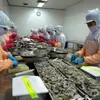Solving trouble brewing in the Vietnam tea industry

The report found that the global tea market had grown at a CAGR of more than 5% during 2009-2016, reaching a production volume of roughly 5.6 million tons in 2016, which is expected to hit 7.2 million by 2022.
The market growth, says the IMARC report, can be attributed to factors such as health benefits, emergence of ready-to-drink teas and a phenomenon commonly referred to as premiumization.
Premiumization is competition in the global market place offering high-quality tea products that consumers desire and for which they are willing to pay a higher price, says Do Kim Lang from the Ministry of Industry and Trade.
Mr Lang, who is the deputy head of the MOIT Trade Promotion Agency, says this is exactly the opposite of the commoditization marketing strategy that the tea segment in Vietnam has been following in the past.
Commoditization, he says, can be defined as competition to lower the sales price of tea products by lowering their quality. As a result, the tea segment collectively has historically experienced a large sales volume of low quality teas for which they earned very little, if anything, in many instances.
Tea is one of the most widely consumed beverages globally, Mr Lang explained at a recent forum in Hanoi discussing approaches to solving the problems brewing in the country’s tea segment.
It has a heritage dating back almost 5,000 years. Depending on the culture, it is consumed as green, black, or oolong tea and has for centuries had a reputation of being a medicinal drink offering numerous health benefits.
It is said to decrease the risk of heart attacks and strokes, prevent bone loss and tooth decay, boost immunity and help maintain over-all good health.
The Vietnam industry has both large and small-scale farmers and others that produce roughly 60% black and 35% green teas annually with the balance consisting of various specialty flavoured teas such as lotus and jasmine, among others.
At the forum, Stephen Kreppel from The Nation Consultancy Ltd notes that one of the primary reasons for the lack of success of the tea segment is the lack of innovation. Companies such as Starbuck’s, he says, are taking over the Asian tea market because of their innovative iced and hot tea beverages with bold, layered flavours.
Starbucks, he adds, is the epitome of premiumization— it brings an entirely new and modern tea experience specifically targeting customers, who increasingly want new and different tastes and experiences.
Whereas Starbucks aims to leverage the company’s expertise by creating best-in-class retail experiences, handcrafting customized beverages, and sourcing the finest ingredients, to become a leader in the tea industry— Vietnamese companies sit back and produce the same boring product year in and year out with little to no innovation.
Fuelled by innovation, Starbucks also adjusts the flavour of their teas by catering to the tastes of customers in each individual market. This stands in stark contrast to Vietnamese who expect all customers in every market to like their one flavour that supposedly is suited for all cultures.
This is simply an absurd marketing concept that needs to and can be successfully changed by growers and producers in the Vietnam tea segment, says Mr Kreppel, as the segment gains more experience in learning how to compete in an open market economy.
Not only are emerging market consumers developing a taste for innovative teas and the increased premiumization in the global tea market – the Vietnamese tea segment suffers from a poor unsavoury reputation, says Wisal Hin, a US tea industry expert.
The segment needs a complete makeover if it ever intends to do any business to speak of in the US market, because the American market is driven by a rapidly expanding number of health-conscious consumers.
The various health benefits of tea coupled with the rising health consciousness among consumers is one of the major growth inducing factors and most US consumers do not believe Vietnamese tea is safe for human consumption and is adulterated by toxic chemicals.
The tea market in the US, he adds, has been segmented based on distinct types of tea including black, green, oolong and white. Black tea is the most widely consumed tea among all others, and holds the largest share in the market.
The demand for green tea, on the other hand, is growing rapidly as people are becoming more health conscious.
Based on region, China holds most of the shares in the global tea production. It is followed by India, Kenya, Sri Lanka and Turkey. Some of the major market players are Unilever, TATA Global Beverages, McLeod Russel, James Finlay, John Keels, Van Rees BV.
Vietnam, says Mr Hin, does not stand any chance of becoming a major player in the US or the global tea market until it takes the time and money to invest in reinventing its image into an industry driven by bringing quality and innovative products to the consumer.





